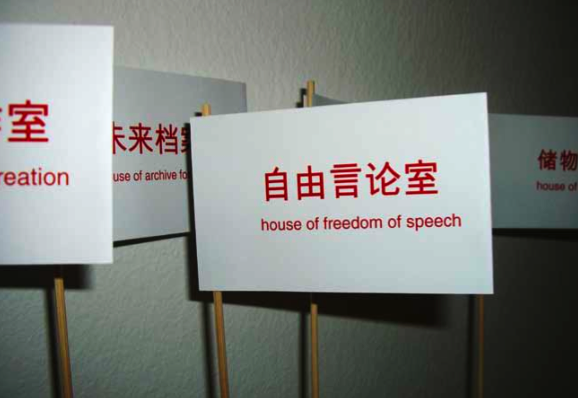The ongoing high-speed transforma-
tions of urban space in current China as
well as the development of new models
of cities and urban landscapes mostly
aim at economic growth.
This Chinese “jump into the future” of
living conditions and architecture, espe-
cially in the years of enormous interna-
tional attention towards China because
of the Olympic Games Beijing 2008 and
the World Expo Shanghai 2010, works
as a world laboratory of city planning.
One of the related problems of these
processes is the large-scale destruction
of long-established city structures, mi-
lieus and environments removing living
forms that were built upon a specific
Chinese history, hardly considering as-
pects of social sustainability and hence
contributing to a collective amnesia of
culture.
The installation 2050 Beijing eight
stroke city is reflecting those phenom-
ena and developments by conceptual-
ising a fictive district in the area of the
Megacity Beijing, which is not aiming at
economic factors but providing an en-
vironment and space focusing on an es-
sential component of Chinese culture,
the art of writing, the calligraphy.
The installation consists of eight small
flags presenting names of eight imag-
ined building complexes (“houses”)
dedicated to the involvement of cul-
ture and contemplation by referring
– in their naming and number - to the
eight basic elements (strokes) of Chi-
nese calligraphy: the house of writing,
the house of reading, the house of free-
dom of speech, the house of materials,
the house of publishing, the house of
translation, the house of poetry and the
house of archive for the future.
The video in the installation takes a look
into the year 2050: A high-tech beetle
is on a “wild trip” through an imagined
city district which consists of Beijing
eight stroke city elements and houses
as well as highways and strange obsta-
cles.
Versions of this work where shown at
Chinese Biennial in Beijing, 2008, cu-
rated by Koan Jeff Baysa (New York) and
Pan Xing Lei (Beijing), and afterwards at
Minoriten Gallery Graz (A) and Moderna
Museet Stockholm (S).
